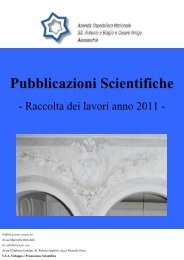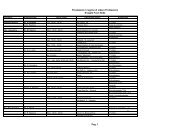Working Paper of Public Health Volume 2012 - Azienda Ospedaliera ...
Working Paper of Public Health Volume 2012 - Azienda Ospedaliera ...
Working Paper of Public Health Volume 2012 - Azienda Ospedaliera ...
You also want an ePaper? Increase the reach of your titles
YUMPU automatically turns print PDFs into web optimized ePapers that Google loves.
<strong>Azienda</strong> <strong>Ospedaliera</strong> Nazionale“SS. Antonio e Biagio e Cesare Arrigo”<strong>Working</strong> <strong>Paper</strong> <strong>of</strong> <strong>Public</strong> <strong>Health</strong>nr. 7/<strong>2012</strong>include 52 countries. The statistical analysis is carried out by correlation, ANOVAand an econometric modeling based on a multiple regression model <strong>of</strong> the breastcancer incidence on two explanatory variables.Results: Partial correlation is higher: r breast cancer, GDP CT =60.3% (sign.0.00). The estimatedrelationship shows an expected incidence <strong>of</strong> breast cancer increase <strong>of</strong> approximately0.05% for a GDP increase <strong>of</strong> 1% and an expected incidence <strong>of</strong> breast cancer increase<strong>of</strong> approximately 3.23% for a CT increase <strong>of</strong> 1%. ANOVA confirms that incidence <strong>of</strong>breast cancer is higher across richer countries, ceteris paribus.Conclusions: Empirical evidence shows that the breast cancer tends to be higher across richercountries, measured by GDP per capita and number <strong>of</strong> Computed Tomography.The main determinants <strong>of</strong> these findings can be due to several socio-economicfactors, mainly localized in richer countries. In addition, this research mayprovide an alternative interpretation to the theory <strong>of</strong> Oh et al. (2010) on theinfluence <strong>of</strong> latitude on breast cancer, focusing on socio-economic factors ratherthan biologic root causes.1. IntroductionThe aim <strong>of</strong> this paper is to answer to the following questions:• How does wealth <strong>of</strong> nations affect the incidence <strong>of</strong> breast cancer in modern societies?• What are the drivers <strong>of</strong> higher incidence <strong>of</strong> breast cancer across countries in order topinpoint differences and similarities?Breast cancer forms in tissues <strong>of</strong> the breast, usually the ducts (tubes that carry milk to thenipple) and lobules (glands that make milk) 3 . Breast cancer is the most frequent form <strong>of</strong>cancer affecting women in the world (GLOBOCAN, 2008). Table 1 shows the incidence andmortality <strong>of</strong> the most frequent cancer for women and in particular the highest rate <strong>of</strong>incidence and mortality <strong>of</strong> the breast cancer.From 1975 through 1977, among women diagnosed with breast cancer in the United States,about 75% survived to the disease at least 5 years. Since 2007, although the incidence rate ishigher than 1975, the breast cancer death rate has been declining steadily (Howlader et al.,2010, cf. Evans and Howell, 2007). According to National Cancer Institute (<strong>2012</strong>) estimates,new cases <strong>of</strong> breast cancer in the United States are 230,480 (female) and 2,140 (male)National Research Council <strong>of</strong> Italy for visiting at Yale University where this research has been originated. Wethank Diego Margon for valuable research assistance. The usual disclaimer applies.3 Definition by National Cancer Institute (<strong>2012</strong>)2



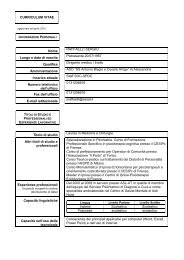
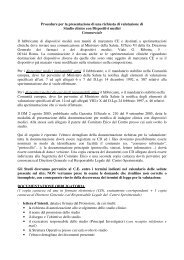

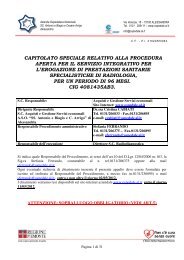
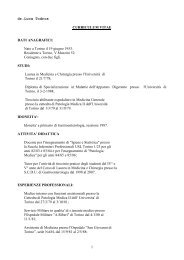
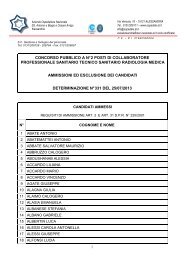

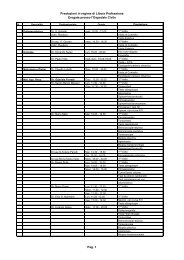


![[torino - 1] lastampa/urc/01 ... 26/10/09 - Azienda ...](https://img.yumpu.com/44058002/1/190x32/torino-1-lastampa-urc-01-26-10-09-azienda-.jpg?quality=85)

